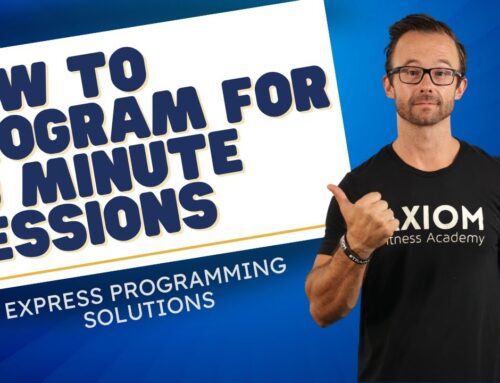
The National Academy of Sports Medicine (NASM) Optimum Performance Training (OPT) Model is a systematic, scientifically-based framework designed to optimize the training, performance, and recovery of athletes and fitness enthusiasts alike. This holistic approach not only helps in passing the NASM exam but serves as a foundation for crafting highly effective and personalized training programs. Let’s explore the NASM OPT Model’s five phases and how to implement them to achieve diverse fitness goals.
A Deep Dive into the NASM OPT Model Phases
Phase 1: Stabilization Endurance
Stabilization Endurance lays the groundwork for future gains in strength and power. It focuses on enhancing muscle endurance, improving balance, and increasing joint stability. A study published in the Journal of Sports Science & Medicine suggests that stabilization exercises can significantly decrease the risk of injuries by strengthening the muscles around critical joints. Trainers should incorporate low-intensity, high-repetition workouts to foster a strong, stable base.
Phase 2: Strength Endurance
Building upon the foundational stability, the Strength Endurance phase aims to improve overall muscle endurance and strength. By employing supersets that combine traditional strength exercises with stabilization movements, this phase effectively challenges the body to adapt and grow stronger. According to The Journal of Applied Physiology, this approach not only enhances muscular endurance but also contributes to better muscular coordination and efficiency.
Phase 3: Muscular Development
The Muscular Development phase, often associated with hypertrophy, targets increases in muscle size and density. This phase is key for clients aiming to improve their body composition or increase muscle mass. Research in The Journal of Strength & Conditioning Research underscores the effectiveness of hypertrophy training, noting that varying rep ranges and intensities can stimulate significant muscle growth.
Phase 4: Maximal Strength
Focusing on lifting heavy loads for fewer repetitions, the Maximal Strength phase is designed to peak the body’s strength capabilities. This stage is crucial for athletes seeking to maximize their strength potential. A pivotal study in Sports Medicine highlights the direct correlation between maximal strength training and improvements in both neuromuscular coordination and overall power output.
Phase 5: Power
The final phase of the NASM OPT Model, Power, combines the elements of speed and strength to enhance the body’s ability to generate force quickly. This phase is particularly beneficial for athletes requiring explosive movements in their sport. Incorporating plyometrics and high-intensity, low-repetition exercises, trainers can significantly improve a client’s power and performance. According to a study in The Journal of Strength & Conditioning Research, power training can lead to marked improvements in sprint times, jump heights, and overall athletic performance.
Implementing the NASM OPT Model in Training Programs
Tailoring Programs to Client Needs
The flexibility of the NASM OPT Model allows trainers to customize programs that align with their clients’ specific goals, fitness levels, and preferences. Whether the focus is on weight loss, muscle gain, or athletic performance, the OPT Model’s structured progression ensures balanced and comprehensive development.
Embracing Technology for Enhanced Training
Modern technology, including fitness apps and wearable devices, can significantly augment the training experience. These tools offer real-time feedback, track progress, and ensure adherence to the optimal intensity for each phase of the model, making it easier for clients to stay engaged and motivated.
Staying Ahead with Continuous Learning
The fitness industry is dynamic, with continuous advancements in research and training methodologies. For trainers, embracing lifelong learning and staying updated with the latest trends and studies is essential to provide the highest level of service and achieve lasting results with their clients.
Conclusion
The NASM OPT Model offers a robust framework for personal trainers seeking to deliver personalized, effective training programs. By understanding and applying each phase, trainers can guide their clients through a comprehensive journey from foundational stability to peak power performance. With a commitment to ongoing education and adapting to innovative training technologies, trainers can leverage the OPT Model to sculpt successful careers in the ever-evolving world of fitness.
——————————————————–
In this video, Axiom Fitness Academy instructor Joe Drake breaks down the entire NASM OPT Model of programming and explains each individual phase. This is easily the most comprehensive guide to the OPT Model and includes sets, reps, tempos, rest periods and more for you to better understand how to program for your clients.
Want to jump to a specific phase?
Use these timestamps below:
-Phase 1 (Stabilization Endurance): 6:32
-Phase 2 (Strength Endurance): 16:03
-Phase 3 (Muscular Development): 21:54
-Phase 4 (Maximal Strength): 27:25
-Phase 5 (Power): 31:03






